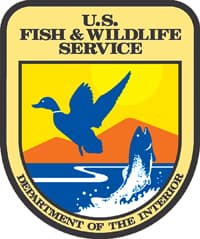New Report Reveals Continuing Coastal Wetlands Losses in U.S.
OutdoorHub 11.21.13

The United States is losing wetlands in coastal watersheds at a significant rate, according to a new report released today by the U.S. Fish and Wildlife Service and the National Oceanic and Atmospheric Administration (NOAA). These wetlands are vital to the survival of diverse fish and wildlife species. Wetlands also help sustain the country’s multi-billion-dollar coastal fisheries and outdoor recreation industries, improve water quality and protect coastal communities from the effects of severe storms.
The report, *Status and Trends of Wetlands in the Coastal Watersheds of the Conterminous United States 2004 to 2009*<http://www.fws.gov/wetlands/Documents/Status-and-Trends-of-Wetlands-In-the-Coastal-Watersheds-of-the-Conterminous-US-2004-to-2009.pdf>,
which was also funded in part by the U.S. Environmental Protection Agency, tracked wetland loss on the Pacific, Atlantic, and Gulf coasts, as well as the Great Lakes shorelines. It concludes that more than 80,000 acres of coastal wetlands are being lost on average each year, up from 60,000 acres lost per year during the previous study.
“Wetlands are important to our nation’s heritage, economy and wildlife – especially when it comes to coastal communities,” said Secretary of the Interior Sally Jewell. “When a study shows that an area four times the size of Miami is disappearing every year, it underscores the importance of strengthening our collective efforts to improve wetlands management, to reduce losses and to ensure coastal infrastructure and resources are protected.”
“Wetlands are essential to fish and shellfish, and are integral to the health of the nation’s multi-billion dollar commercial and recreational fishing industries,” said Mark Schaefer, NOAA Assistant Secretary for Conservation and Management. “The three most valuable species that depend on habitats supported by our wetlands—crab, shrimp, and lobster—had a combined value of $1.6 billion in 2012. The disappearance of this habitat could be detrimental to our nation’s seafood supply.”
Notable wetland losses were recorded along the Gulf Coast (257,150 acres) and accounted for 71 percent of the total estimated loss during the study period. The Atlantic Coast lost 111,960 acres and the Pacific Coast 5,220 acres. Although the losses along the Pacific Coast were small in comparison to the others, they represent an important component of coastal wetlands in this region, which has a predominantly high, rocky coastline. The watersheds of the Great Lakes region experienced a net gain in wetland area of an estimated 13,610 acres.
“In addition to the important economic and safety benefits they provide to people, coastal wetlands are also vitally important to native fish and wildlife species,” said U.S. Fish and Wildlife Service Director Dan Ashe.
“While they comprise less than 10 percent of the nation’s land area, they support 75 percent of our migratory birds, nearly 80 percent of fish and shellfish, and almost half of our threatened and endangered species. We can’t sustain native wildlife for future generations without protecting and restoring the coastal wetlands that support them.”
The increase in the overall rate of wetland loss was attributed to losses of saltwater wetlands in the Gulf of Mexico due to coastal storms, in combination with freshwater wetland losses in both the Atlantic and Gulf of Mexico. Large losses of freshwater, forested wetland areas were attributed to urban and rural development and some forestry practices.
In some coastal watersheds, rising ocean levels are encroaching into wetlands from the seaward side, while development from the landward side takes a further chunk out of the existing wetland area and prevents wetlands from being able to migrate inland. This dual threat squeezes wetlands into an ever smaller and more fragile coastal fringe.
As evidenced in published reports to the Congress on the status and trends of wetlands in the lower 48 states, conservation programs on agricultural and other undeveloped lands have helped conserve and restore wetlands.
These programs have helped ameliorate wetland losses in the Great Lakes States and in agricultural portions of other coastal watersheds and are viewed as important programs contributing to wetland conservation strategies.
“For decades, USDA conservation efforts have contributed a great deal to protecting and restoring our wetlands,” said Ann Mills, Deputy Undersecretary for Natural Resources & Environment. “Today’s report to Congress underscores the value of these conservation programs, many of which are authorized under the Farm Bill, and serves as yet another reminder that America needs passage of a new Food, Farm and Jobs Bill as soon as possible to continue these critical investments in wildland conservation.”
Several federal agencies are collaborating to better understand how wetlands are affected by land use practices and other factors and incorporating wetlands protection into policy. These efforts have been incorporated into activities under the National Ocean Policy Implementation Plan (National Ocean Council 2013), which describes the specific actions federal agencies will take to address key challenges and promote stewardship of coastal resources.
The data in this report provide new and more comprehensive information about coastal wetland trends and may be instrumental in forming additional recommendations to improve the management of wetlands in coastal watersheds, reduce losses and ensure coastal infrastructure and resources are protected.
The report is available online at

